- Home
- Troy Denning
Shadows of Reach: A Master Chief Story Page 2
Shadows of Reach: A Master Chief Story Read online
Page 2
The Seraph symbols on John’s HUD began to arc out in a starburst pattern, trying to array themselves in a broad circle so they could triangulate on the Special Delivery’s flame trail. It was a foolish maneuver. By the time they fixed a vector, the Owl would be much too far ahead to catch…
Unless the Seraphs weren’t trying to make the interception.
John studied the top of the situation monitor, looking for the thermal blooms of approaching craft. The blue blotches of the polar snowfields had been completely replaced by the green circle of Big Crater Bay and, along the top edge, the orange sweep of the Eposz glasslands. But there were no more heat blossoms—at least, not that the Special Delivery’s nose cameras could resolve.
The crisp voice of the Owl’s copilot, First Lieutenant Maks Chapov, sounded over the internal comm net. “Master Chief, how would you feel about losing the digging equipment?”
John glanced toward the rear of the troop cabin, where the team’s downsized excavation equipment sat secured to the deck. Positioned side by side and facing aft for speedy unloading, the two machines—a four-boom drilling jumbo and a two-kiloliter load-haul-dump wagon with a heavily loaded cargo shelf on the back—were barely four meters long and two meters wide. But they were powered by Toroidal Magnetic Confinement Device compact fusion reactors and equipped with heavy-duty hydrostatic transmissions, so they were as heavy as full-size armored personnel carriers. If it came down to dodging Seraph fire, the Special Delivery was going to have all the agility of a resupply pod.
“Why would I need to?” John replied.
“Major Van Houte doesn’t like the Seraph deployment,” Chapov said.
A hotshot flier who had transferred into the crew after a Phaeton mass cannon took out the Special Delivery’s last copilot, Maks Chapov had unusual skill and quick reflexes that were the perfect complement to Eznik Van Houte’s vast experience and bottomless bag of tricks. At least, that was how the captain of the UNSC Infinity, Thomas Lasky, had explained the pairing to John—though it seemed more likely that Lasky was just trying to leaven a young pilot’s aggression with the wisdom of an old veteran.
“They’re not trying to intercept us,” Chapov continued. “The major thinks they could be a tracking flight.”
“I think he could be right,” John said. “What’s that have to do with my excavation equipment?”
“If the tracking flight is vectoring in a wing of interceptors, I’ll need a light boat to get us out of here in one piece.”
“Any indication that’s what the enemy is doing?” John asked. “Or who they are?”
“There’s some long-range comm chatter,” Chapov said. “In Jiralhanae.”
“That’s not good,” Fred said.
Only two of the major Covenant splinter groups were dominated by Jiralhanae, a huge pseudo-ursine species that had supplied the Covenant with many of its most ferocious warriors. The first was an army of religious zealots known as the Keepers of the One Freedom. The second was a horde of mercenary raiders called simply the Banished. Both were bad news, and both employed Jiralhanae pack-attack tactics that made their fliers among the most feared enemies of UNSC fighter squadrons.
“Yeah, not good,” Chapov said. “And it gets worse. The tracking flight launched from the coordinates of SWORD Base.”
Fred groaned, Kelly let her chin drop, and even Linda broke her meditation long enough to look toward the situation monitor. The Keepers and the Banished were both obsessive salvagers of Forerunner artifacts, and years earlier a Forerunner vessel had been discovered buried under the ice near SWORD Base. The UNSC had attempted to destroy both the vessel and the surrounding installation when Reach fell, but the Covenant plasma bombardment had prevented anyone from actually confirming a successful demolition. So it was possible that enough of the vessel remained to explain the presence of ex-Covenant salvagers.
It just didn’t mesh with why the Jiralhanae had launched a tracking flight instead of an interception mission.
John continued to watch both the situation monitor and the combat information system synced to his HUD. Neither display showed a fighter cadre vectoring across Big Crater Bay at intercept velocity, but that didn’t mean they weren’t coming. Orbital combat control systems were not an option for stealth insertions, because a communications stream would reveal the insertion craft’s presence—and sometimes its exact location. So the Special Delivery was limited to its own instruments, which could only detect threats approaching from below the horizon.
John couldn’t recall the formula for determining the distance-to-horizon, and he didn’t need to. The question had barely occurred to him before his Mjolnir’s onboard computer, linked directly to his mind via a neural lace implanted at the base of his skull, calculated the answer and displayed the information on his HUD. Cortana used to do that—answer his question before he could ask it.
DETECTION LIMIT 489 KILOMETERS
AT ALTITUDE 15,305 METERS
MINIMUM TIME TO INTERCEPTION
2:24 MINUTES/SECONDS
ASSUMING CRAFT FLYING DIRECTLY
TOWARD EACH OTHER AT MACH 5
Mach 5 was about as fast as an interceptor could fly and have any reasonable hope of reacting to a target’s evasive maneuvers, so there was no need to second-guess the parameters the onboard computer had chosen. Once an enemy craft appeared on the horizon, the Special Delivery would have two and a half minutes to react, and probably a lot longer than that, since chances were small that the two craft would be flying directly at each other. It wasn’t a lot of time, but it was still almost twice as long as the Spartans would need to unfix and dump the excavation machines.
Which made Chapov’s question a bit premature.
“Lieutenant Chapov,” John said. “What aren’t you telling me?”
“I don’t understand, Master Chief.”
“You were at the mission briefing,” John said. “You do recall that the assets we’re trying to retrieve are hidden in Dr. Halsey’s lab at the bottom of CASTLE Base?”
“I remember.”
“And you also remember that what’s above CASTLE Base right now is essentially a big rubble pit?”
A lieutenant was superior in rank to a master chief, so strictly speaking, John was being a bit insubordinate by interrogating Chapov this way. But respect was an earned commodity in any military unit, and that was especially true in special operations, where junior officers were expected to show senior enlisted personnel the deference they deserved. And after three decades on the front lines, leading Spartans against humanity’s most dangerous enemies, John had earned the right to speak to a young hotshot copilot any way he felt necessary.
Besides, CASTLE Base was located two kilometers underneath what was once Menachite Mountain, which had been reduced to a ten-kilometer-wide detritus field during the Covenant attack on Reach. So the success of the mission depended on making retrieval as simple as possible—and on the vault where the assets were stored still being intact, of course. But Dr. Halsey had promised John that the vault was strong enough to withstand the collapse of CASTLE Base, and she was rarely wrong.
Especially when she was risking the lives of her Spartans.
After a short pause, Chapov said, “I do, Master Chief.”
“Then why are you telling me to dump my excavation equipment?” John asked. “Do you expect Blue Team to dig out the entrance to CASTLE Base by hand?”
“I haven’t told you to dump the excavation machines.” Chapov’s tone was resolute and unintimidated. “Not yet.”
“Yet?” John said. He was aware of his mythical status in the UNSC, and he liked that Chapov was willing to stand up to him anyway. But that didn’t mean he was going to let the kid off easy. “Lieutenant, do you understand the stakes here? Dr. Halsey needs what’s in her lab to stop Cortana. Aborting this mission is not an option.”
“Which is why I’m asking you to think about the excavation equipment,” Chapov said. “If we get shot down, Blue Team won’t be diggi
ng out anything.”
John checked the combat information system in his HUD again. There weren’t any interceptors in view, and the tracking flight had fallen so far behind that it was barely on the display. But the Special Delivery had descended to ten thousand meters, which meant the distance-to-horizon was only 361 kilometers. An attacking Seraph could be close enough to open fire in a little less than two minutes.
Still plenty of time.
“Lieutenant Chapov, what aren’t you telling me?” John asked again. “And this time, don’t dodge the question.”
“There’s nothing to tell,” Chapov said. “We don’t like the way this feels. That’s all.”
“Glad to hear I’m not alone in that,” Kelly said. “If there’s a tracking flight, there are bound to be interceptors.”
“Exactly,” Chapov said. “We can’t see them yet, but with that chatter we heard earlier…”
“You’re worried about an interceptor flight coming up from Arany Basin,” John said. Located in the plains east of the Highland Mountains where Menachite Mountain and CASTLE Base were located, Arany Basin was a vast lowland adjacent to their planned flight path. “Because it isn’t that far off our course.”
“It’s a concern,” Van Houte said, joining in. Over the Owl’s internal comm net, his voice sounded raspy and almost brittle. “But we should be fine.”
“Should be? Or will be?” John didn’t know whether it would even be possible to dig out the entrance to CASTLE Base by hand, but Chapov was right about one thing—they would have no chance of success if they didn’t make it to the landing site.
“There are no guarantees, Master Chief,” Van Houte said. “You know that.”
“All too well,” John said. “But when someone asks me to think about an equipment dump, I’d like to know why.”
“My fault,” Van Houte said. “Lieutenant Chapov isn’t accustomed to a pilot who thinks out loud.”
“And?”
“And I said we could be in trouble if a flight of interceptors launches from the basin.”
John looked at the situation monitor again. Only a thin crescent of water remained, its green glow slowly dropping out of view as the Special Delivery approached the south side of Big Crater Bay. The insertion plan called for the Owl to slow to subsonic speed before it crossed the shoreline and started over land, but the combat information system indicated it was still traveling at almost Mach 5. Clearly Van Houte was modifying the insertion plan to stay ahead of the tracking flight.
But at that kind of velocity, the Owl would be generating so much friction heat and sonic energy that any Seraphs coming from the Arany Basin wouldn’t need to be vectored in. They would just be able to follow their own thermal detectors.
“We’ll need sixty seconds to unfix the equipment,” John said over the internal comm net. “And we can’t dump it at this velocity.”
“Have some faith, Master Chief,” Van Houte said. “I still have a trick or two left.”
John wasn’t sure he believed the major. But beneath the situation monitor, Chief Mukai was sitting in her jump seat with her head cocked, studying him with a bored expression that suggested she could not believe the legendary John-117 was worried about a few stray Seraphs. It was an act, of course, but he took her point. Eznik Van Houte had been flying insertion craft as long as John had been fighting the Covenant, and he would let them know when the time came to worry.
“Sorry, Major. Just apprising you.”
“No need to apologize,” Van Houte said. “I’d be nervous too if some crackerjack copilot started asking what equipment I could dump.”
“Sorry, sir.” Chapov sounded resentful, not apologetic. “I must have mistaken your muttering for a directive.”
“No worries, Lieutenant. You’ll learn soon…” Van Houte let the sentence trail off, and when he spoke again, it was in an indistinct mumble. “Well… didn’t expect…”
John felt his weight pushing against the crash harness as the Special Delivery changed course. On the situation monitor, the last green sliver of water slid off the bottom edge as Big Crater Bay passed completely out of view behind them, and the indigo crescent of its muddy southern beach began to creep down the right side of the display. The Owl was veering southeast, toward the Arany Basin. The combat information system showed it dropping through six thousand meters, but still traveling at Mach 5.
Van Houte wasn’t modifying the insertion plan—he was trashing it. John watched his HUD for some indication of the problem, but saw nothing. Of course, the Owl had descended to fifty-five hundred meters, which put its detection limit at…
He found himself waiting for his Mjolnir’s onboard computer to provide the answer. It was connected to his mind through the same neural lace that Cortana had used, but it was not nearly as efficient. That was only to be expected. After Cortana had corrupted so many smart AIs, the UNSC now avoided using them, substituting less capable “dumb” AIs whenever possible. And someone aboard the Infinity—probably Captain Lasky himself—didn’t want the Spartans taking even that much of a chance. Although their GEN3 operating systems were partitioned to prevent an AI—even a smart one—from interfering with the Mjolnir’s functionality, on this mission they carried only upgraded versions of the same onboard computers that had supported their Mark IV prototypes thirty years earlier.
A half second later, the answer appeared on John’s HUD.
He still expected to hear her voice as a part of it. No matter how efficient his computer was, it didn’t fill the void left by Cortana’s absence. That hadn’t changed, and John doubted it ever would.
DETECTION LIMIT 288 KILOMETERS
AT ALTITUDE 5,462 METERS
MINIMUM TIME TO INTERCEPTION
1:24 MINUTES/SECONDS
ASSUMING CRAFT FLYING DIRECTLY
TOWARD EACH OTHER AT MACH 5
Depending on where the trouble was coming from, Blue Team would have only about a minute and a half to dump the excavation machines. But that didn’t much matter, because at Mach 5, the Owl would be ripped apart as soon as Chief Mukai dropped the rear loading hatch.
“Arm decoys,” Van Houte said.
“At this speed?” Chapov’s voice broke an octave high. “We’ll disintegrate the second we open—”
“When I need your opinion, Lieutenant, I’ll ask for it.” Van Houte delivered the rebuke so calmly that John wasn’t quite sure it was intended that way. “Arm the decoys, please. I’ll tell you when to open the doors.”
“Aye,” Chapov muttered. “Arming decoys.”
The indigo beach vanished from the situation monitor, yielding to the mottled orange sweep of the warmer lechatelierite. John saw no indication of an approaching threat, but his HUD showed their altitude continuing to drop rapidly. If Van Houte didn’t pull up soon, there was going to be a very large crater in the Eposz glasslands.
Knowing better than to distract the pilots midmaneuver, John looked to Mukai—and found her riding easy in her jump seat, smirking at Fred with her hands resting in her lap. Whatever Van Houte was doing, it wasn’t the first time.
Mukai noticed John watching her and smiled. She tugged at the straps of her crash harness, making sure the quick-release buckles were securely fastened, then waved a finger at all four Spartans.
“Make sure your harnesses are locked down,” she said. “It’s going to get rough.”
“Could we know why?” Kelly asked.
“Because it’s better than being shot down,” Mukai said. “Okay?”
“Seems reasonable,” Fred said. He bumped Linda’s shoulder. “You catch that?”
Linda remained steady as a mountain. “A quiet mind is an alert mind.”
“So that’s a yes,” Fred said. He looked across the troop bay toward John. “Any hints from the cockpit?”
To guard against overloading the avionics systems, only the team leader had the capability of syncing into the cockpit feeds. John checked his HUD and found the feed as uninformative as before—though
he did note that the Owl’s detection limit had dropped to 260 kilometers.
“No idea.”
“Sorry to keep you in the dark for so long,” Van Houte said over the internal comm net. “We had maneuvers to plan.”
“If you’re still planning,” John said, “we can wait.”
“We’re used to waiting,” Fred added. “We’re infantry.”
“No need,” Van Houte said. “I can fill you in while Lieutenant Chapov disables the missile ignitions.”
“What?!” Chapov screeched the question.
“Disable the ignition systems on all six missiles,” Van Houte said. “Must I give you every order twice?”
“Of course not, sir. Disabling ignition systems on all six Argents.”
“Thank you, Lieutenant,” Van Houte said. “Now, Master Chief?”
“Yes, sir?”
“You may have noticed that I’ve abandoned our insertion plan.”
“I had, Major,” John said. “I assume you have a good reason.”
“I’m afraid so. As we were crossing Big Crater Bay, I noticed some beyond-the-horizon launch flares.”
“Ah,” John said. “Given the tracking flight we picked up, weren’t we expecting that?”
“Not from the direction of New Miskolc, we weren’t,” Van Houte said. “They’d have been in visual range just about the time we reached our objective at Menachite Mountain.”
“That would’ve complicated things,” Fred remarked.
“Not that badly,” Van Houte said. “But there was a second set of launch flares.”
“Let me guess,” John said. “From Mohács?”
“Oddly not,” Van Houte said. “It was closer to the Szarvas Regeneration and Salvage Facility.”
“They’re trying to box us in, then?” Kelly asked, completely unfazed. “How are their chances?”
“That depends on how many launches I didn’t see,” Van Houte said. “So far, we have flights launching from the ruins of two UNSC sites—SWORD Base and the Szarvas salvage yards—and an urban center where I’m fairly sure there would have been some UNSC administrative facilities.”

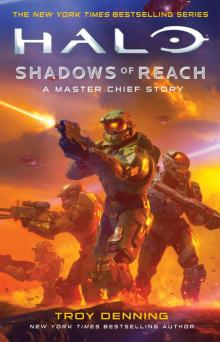 Shadows of Reach: A Master Chief Story
Shadows of Reach: A Master Chief Story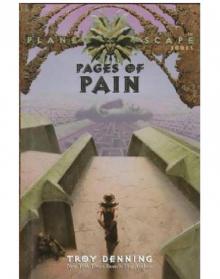 Pages of Pain p-1
Pages of Pain p-1 Star Wars 396 - The Dark Nest Trilogy III - The Swarm War
Star Wars 396 - The Dark Nest Trilogy III - The Swarm War Star Wars: Fate of the Jedi: Apocalypse
Star Wars: Fate of the Jedi: Apocalypse A Forest Apart
A Forest Apart Star Wars: Dark Nest II: The Unseen Queen
Star Wars: Dark Nest II: The Unseen Queen Star Wars: A Forest Apart
Star Wars: A Forest Apart Tempest: Star Wars (Legacy of the Force) (Star Wars: Legacy of the Force)
Tempest: Star Wars (Legacy of the Force) (Star Wars: Legacy of the Force) Star by Star
Star by Star Crucible: Star Wars
Crucible: Star Wars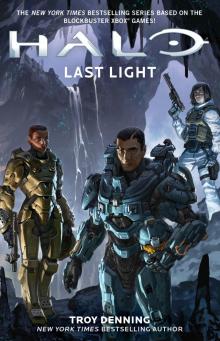 Last Light
Last Light Invincible
Invincible Inferno
Inferno Star Wars - The Trouble With Squibs
Star Wars - The Trouble With Squibs Abyss
Abyss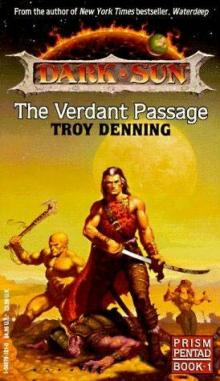 The Verdent Passage
The Verdent Passage Vortex: Star Wars (Fate of the Jedi) (Star Wars: Fate of the Jedi)
Vortex: Star Wars (Fate of the Jedi) (Star Wars: Fate of the Jedi)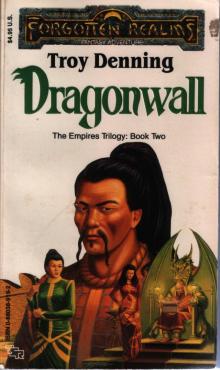 Dragonwall e-2
Dragonwall e-2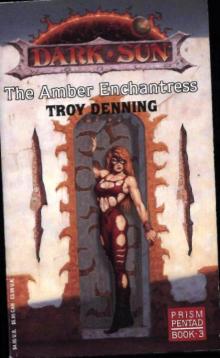 The Amber Enchantress
The Amber Enchantress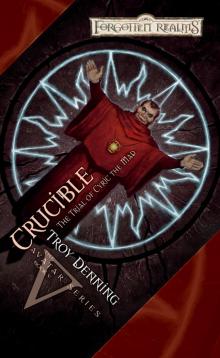 Crucible
Crucible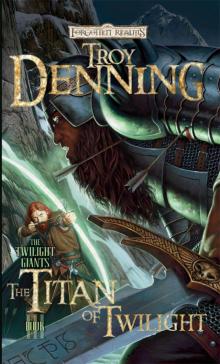 The Titan of Twilight
The Titan of Twilight Dragonwall
Dragonwall Beyond the High Road c-2
Beyond the High Road c-2 The Siege rota-2
The Siege rota-2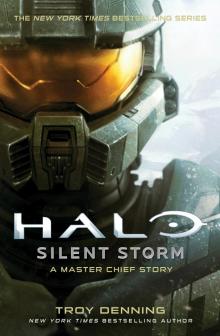 Silent Storm: A Master Chief Story
Silent Storm: A Master Chief Story The Ogre's Pact
The Ogre's Pact The Sorcerer rota-3
The Sorcerer rota-3 The Parched sea h-1
The Parched sea h-1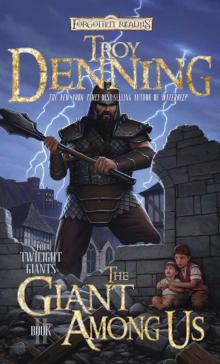 The Giant Among Us
The Giant Among Us Recovery
Recovery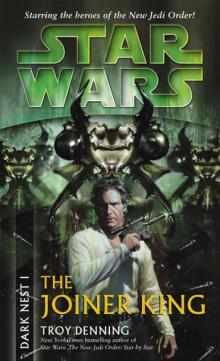 Star Wars: Dark Nest 1: The Joiner King
Star Wars: Dark Nest 1: The Joiner King Faces of Deception le-2
Faces of Deception le-2 The Parched Sea
The Parched Sea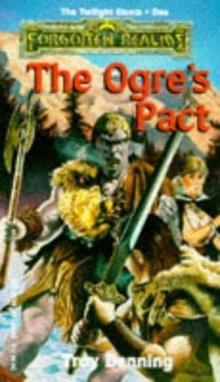 The Ogre's Pact зк-1
The Ogre's Pact зк-1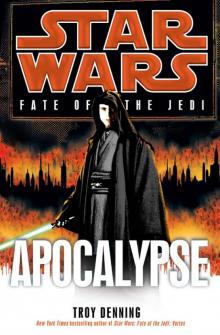 Apocalypse
Apocalypse Star Wars®: Dark Nest I: The Joiner King
Star Wars®: Dark Nest I: The Joiner King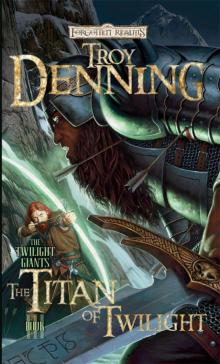 The Titan of Twilight ttg-3
The Titan of Twilight ttg-3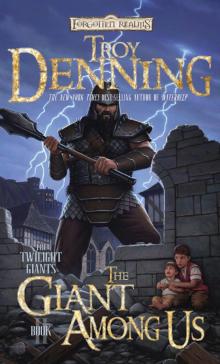 The Giant Among Us ttg-2
The Giant Among Us ttg-2 The Summoning rota-1
The Summoning rota-1 Tatooine Ghost
Tatooine Ghost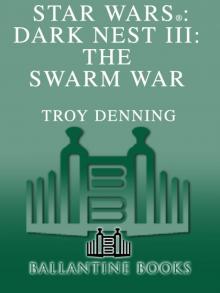 Star Wars®: Dark Nest III: The Swarm War
Star Wars®: Dark Nest III: The Swarm War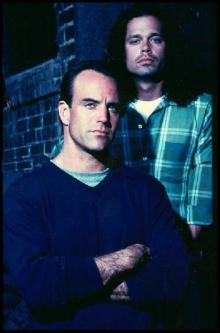 Retribution
Retribution A Forest Apart: Star Wars (Short Story)
A Forest Apart: Star Wars (Short Story) Faces of Deception
Faces of Deception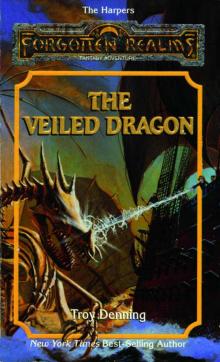 The Veiled Dragon h-12
The Veiled Dragon h-12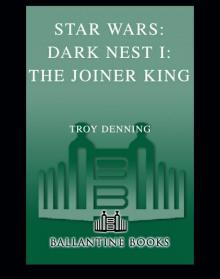 Star Wars 390 - The Dark Nest Trilogy I - The Joiner King
Star Wars 390 - The Dark Nest Trilogy I - The Joiner King Waterdeep
Waterdeep STAR WARS: NEW JEDI ORDER: RECOVERY
STAR WARS: NEW JEDI ORDER: RECOVERY